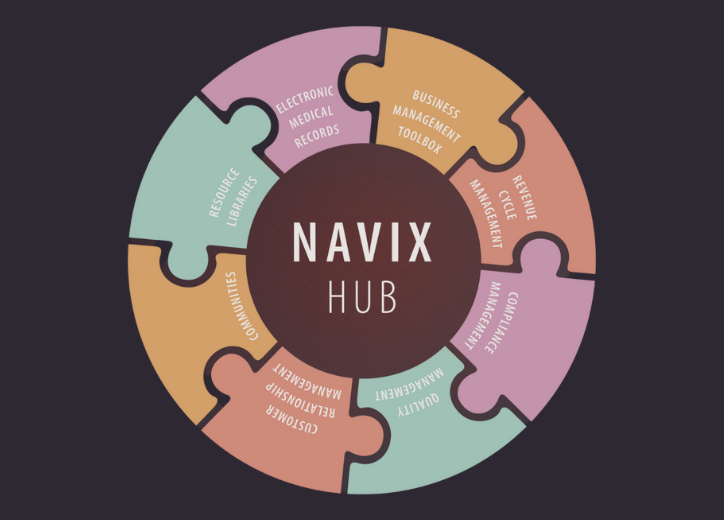As a mental health organization, you put a lot of effort into improving your customers' lives. Your work enables people to overcome obstacles and develop into their best selves. Your staff and patients do not deserve to be slowed down by problematic software and outdated systems for classifying cases, composing case notes, and maintaining communication. This is especially crucial for nonprofit behavioral health organizations, which frequently operate on razor-thin budgets, doing as much as they can with their limited resources.
In the current healthcare climate, a focus on employee well-being and mental health is more important than ever. Hospitals and clinics are turning to cutting-edge technological solutions, like electronic medical records (EMRs), customer relationship management (CRM) systems, and revenue cycle management (RCM) platforms, to help with this goal. While these systems have traditionally been used to improve communication and streamline data management between providers, patients, and staff, they can also play a key role in promoting employee well-being.
When your mental health organization doesn’t fit neatly into a box like other organizations, why should you expect your behavioral health software to do the same? By integrating CRM, RCM, and EMR processes, Navix Health helps you improve your customer relationships, finances, and record-keeping operations according to what suits you and your team the best. This way, you can reduce workplace tension and consequently improve your workforce's mental health as more work gets down with less effort.
Here’s a closer look at how an EMR, CRM, and RCM integrated system can help with employee well-being and mental health in healthcare settings.
Effective management improves mental wellness in the workforce.
Poor mental health not only has a significant effect on the employees but also has adverse effects on companies, including higher staff turnover, sick leave, lower motivation, and lost productivity.
Substantial evidence supports the idea that workplaces with high mental wellness levels are more productive. In fact, taking care of employee welfare at work can boost output by up to 12%. Employers must have policies and procedures in place to monitor employee mental health at work and be prepared to provide assistance if necessary.
Healthcare organizations must keep an eye on and provide more significant mental health assistance for their employees. Frequently, spending extra time off unwell is the first indication that someone has poor mental health. Absence patterns, such as consistently taking certain days off or spending more time off than usual, may point to an issue.
However, the behavioral healthcare industry is one of the world's most demanding and rapidly expanding industries. Employers already have much on their plate to deal with, so a software system that allows them to track absences and spot trends in employee behavior can be highly beneficial. Managers may find out the real reasons why the individuals the system alerts are taking time off by communicating with them. This way, they can ensure appropriate re-engagement and support are in place when they return to work. Employers can ensure their staff is mentally healthy by keeping an eye on absences and setting up frequent catch-ups with workers.
How workforce management technology supports mental health at work
Workforce management software, particularly solutions designed to enable better workforce engagement, helps organizations strengthen employee relationships and better support employee well-being. Particularly now, when businesses are trying to recover after multiple lockdowns, workforce management software is a tool that organizations are turning to provide support and motivation to team members worrying about their jobs. Using self-service portals gives employees more control over their work experience. Also, it enables management to use the technology to check how their team members feel physically and mentally.
Achieving work-life balance
In order to ensure good mental well-being, striking the right work-life balance is critical as it helps one de-stress and take a break from the pressures that come with working in the behavioral health sector. Navix Health's integrated CMR, EMR, and RCM system allow the workforce to streamline the organization's processes and have easier access to communication and record-keeping tools, which enables them to free up their time and relieve themselves from an abundance of management tasks. The environment at a healthcare organization is a stressful one, and a good software system in place can make it much better for the workforce, increasing overall productivity as well.
Swift information access for first responders.
The job of first responders is an extremely stressful one; they have to perform as quickly as possible to provide patients with the proper treatment. Time is vital in such instances. Recent incidents have brought to light the need for emergency medical providers to have access to patient data. With an integrated software system, first responders can access patient medical records in an instant, allowing first responders to quickly and accurately assess their patients and provide more tailored care, thus relieving some of the pressure from their shoulders.
Swift information access for the workforce.
With separate systems of adding and retrieving information, workforce members may have to log in and log out of different platforms to get all the data they are looking for. Automating processes and integrating CRM, EMR, and RCM systems enable employees to engage with just one platform rather than login and log out of multiple programs. For example, having a workforce management solution that integrates with revenue cycles and customer management gives employees much greater control. The ability to update and access patient information immediately, rather than waiting for someone else to do it or switching between several systems themselves, plays a significant role in promoting good mental health. Practical technological solutions that assist employees in managing their activities are vital in managing work, life, and welfare in these times of uncertainty and unpredictability.
Overall, Navix Health’s integrated EMR, RCM, and CRM software can positively impact employee well-being by reducing the amount of time and effort spent on administrative tasks and allowing healthcare providers and their workforce to focus more on their well-being and patient care.


